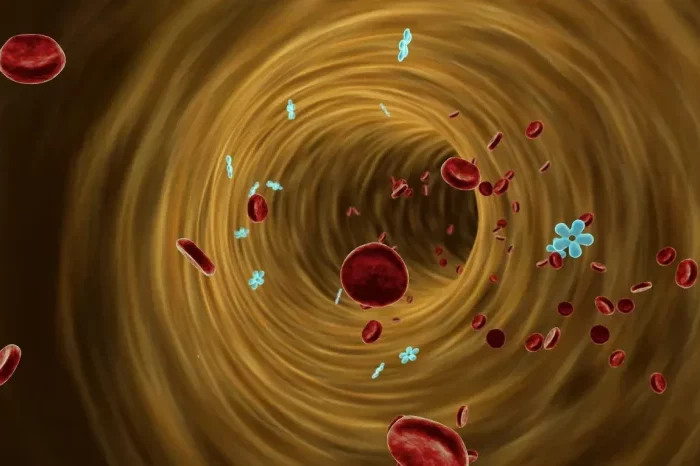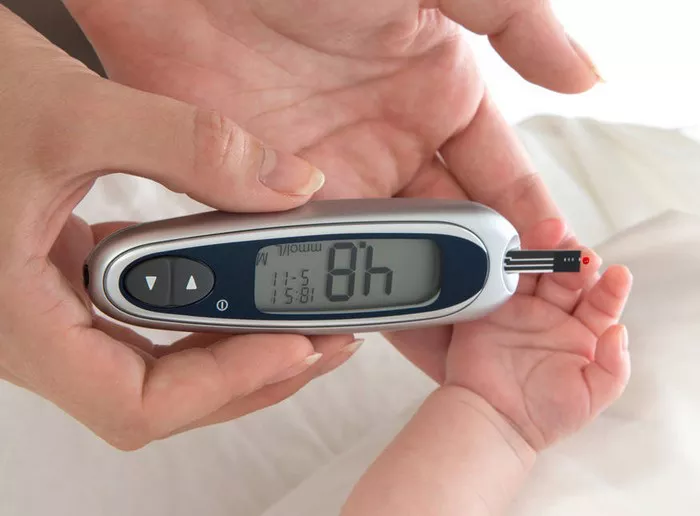Insulin resistance is a metabolic condition characterized by the body’s diminished ability to respond to the hormone insulin. This dysfunction often precedes the onset of type 2 diabetes and is associated with various other health issues. Understanding the signs of insulin resistance is crucial for early detection and intervention, potentially preventing the progression to more serious conditions. This article delves into the key indicators of insulin resistance, helping both healthcare professionals and patients recognize this silent yet significant health issue.
The Role of Insulin in the Body
To appreciate the signs of insulin resistance, it’s essential to understand insulin’s role. Insulin is a hormone produced by the pancreas that facilitates the uptake of glucose from the bloodstream into cells, where it is used for energy. When the body’s cells become less responsive to insulin, the pancreas compensates by producing more insulin. Over time, this increased demand can exhaust the pancreas, leading to elevated blood glucose levels and, eventually, type 2 diabetes.
Early Signs and Symptoms of Insulin Resistance
The onset of insulin resistance can be insidious, often presenting with subtle and non-specific symptoms. Recognizing these early signs can prompt further investigation and early intervention.
1. Fatigue and Tiredness
One of the most common and often overlooked signs of insulin resistance is chronic fatigue. Individuals may feel unusually tired even after adequate rest. This fatigue occurs because cells are unable to efficiently absorb glucose from the bloodstream, leading to insufficient energy production.
2. Brain Fog
Insulin resistance can affect cognitive function, leading to a phenomenon often described as “brain fog.” This condition is characterized by difficulties in concentration, memory lapses, and general mental sluggishness. The brain relies heavily on glucose for energy, and impaired glucose uptake can significantly impact cognitive function.
3. Increased Hunger and Cravings
Persistent hunger and cravings, especially for carbohydrates and sugary foods, are common in insulin resistance. Despite high levels of glucose in the blood, the cells are starved of energy, prompting the body to signal for more food intake.
4. Weight Gain, Especially Around the Abdomen
Weight gain, particularly central obesity (accumulation of fat around the abdomen), is a significant indicator of insulin resistance. This type of fat distribution is more metabolically active and is associated with higher levels of insulin resistance compared to fat distributed in other areas of the body.
5. Acanthosis Nigricans
Acanthosis nigricans is a skin condition characterized by dark, velvety patches, typically found in body folds such as the neck, armpits, and groin. This condition is directly linked to insulin resistance and can be an early warning sign, especially in adolescents and young adults.
Metabolic and Biochemical Indicators
Beyond physical symptoms, insulin resistance can manifest through various metabolic and biochemical changes detectable through clinical testing.
1. Elevated Fasting Blood Glucose
An elevated fasting blood glucose level (100-125 mg/dL) is a key indicator of insulin resistance. This range is classified as impaired fasting glucose, a precursor to diabetes. Regular monitoring of fasting blood glucose can help in the early detection of insulin resistance.
2. Hyperinsulinemia
Hyperinsulinemia, or elevated levels of insulin in the blood, is a compensatory response by the pancreas to insulin resistance. Measuring fasting insulin levels can provide insights into the presence of insulin resistance even before significant hyperglycemia develops.
3. Dyslipidemia
Insulin resistance is often associated with an abnormal lipid profile, including elevated triglycerides, low high-density lipoprotein (HDL) cholesterol, and high low-density lipoprotein (LDL) cholesterol. This dyslipidemia is a risk factor for cardiovascular disease and is commonly seen in insulin-resistant individuals.
4. Increased Inflammatory Markers
Chronic low-grade inflammation is a hallmark of insulin resistance. Elevated levels of inflammatory markers such as C-reactive protein (CRP) and interleukin-6 (IL-6) can indicate underlying insulin resistance and associated metabolic dysfunction.
Risk Factors and Associated Conditions
Several risk factors and conditions are strongly associated with insulin resistance. Identifying these can aid in the early recognition and management of the condition.
1. Obesity
Obesity, particularly visceral obesity, is a major risk factor for insulin resistance. The excess adipose tissue, especially around the abdomen, secretes various adipokines and inflammatory cytokines that impair insulin signaling.
2. Sedentary Lifestyle
Physical inactivity contributes to the development of insulin resistance. Regular physical activity improves insulin sensitivity by increasing glucose uptake in muscles and reducing visceral fat.
3. Genetic Predisposition
A family history of type 2 diabetes or insulin resistance increases the risk of developing these conditions. Genetic factors play a significant role in insulin metabolism and sensitivity.
4. Polycystic Ovary Syndrome (PCOS)
PCOS is a condition characterized by hormonal imbalance and metabolic issues, including insulin resistance. Women with PCOS often exhibit signs of insulin resistance, such as weight gain and acanthosis nigricans, even without significant obesity.
5. Sleep Disorders
Sleep disorders, including obstructive sleep apnea, are linked to insulin resistance. Poor sleep quality and duration can affect hormonal balance and glucose metabolism, exacerbating insulin resistance.
Long-term Consequences of Insulin Resistance
If left unmanaged, insulin resistance can lead to several serious health conditions. Understanding these potential outcomes underscores the importance of early detection and intervention.
1. Type 2 Diabetes
The most direct consequence of prolonged insulin resistance is the development of type 2 diabetes. As insulin resistance progresses, the pancreas can no longer compensate, leading to chronic hyperglycemia and diabetes.
2. Cardiovascular Disease
Insulin resistance is a major risk factor for cardiovascular disease. The associated dyslipidemia, hypertension, and chronic inflammation contribute to the development of atherosclerosis and other cardiovascular conditions.
3. Non-Alcoholic Fatty Liver Disease (NAFLD)
NAFLD is increasingly recognized as a consequence of insulin resistance. It involves the accumulation of fat in the liver, which can progress to liver inflammation, fibrosis, and cirrhosis.
4. Metabolic Syndrome
Metabolic syndrome is a cluster of conditions that includes insulin resistance, hypertension, dyslipidemia, and central obesity. This syndrome significantly increases the risk of cardiovascular disease and type 2 diabetes.
Diagnostic Approaches
Diagnosing insulin resistance involves a combination of clinical assessment, laboratory tests, and sometimes imaging studies. Here are some common diagnostic approaches:
1. Homeostasis Model Assessment of Insulin Resistance (HOMA-IR)
HOMA-IR is a widely used method to estimate insulin resistance. It is calculated using fasting glucose and insulin levels. A higher HOMA-IR value indicates greater insulin resistance.
2. Oral Glucose Tolerance Test (OGTT)
The OGTT involves measuring blood glucose levels before and after the ingestion of a glucose-rich drink. It assesses how well the body handles glucose and can help diagnose insulin resistance and diabetes.
3. Fasting Insulin and Glucose Levels
Measuring fasting insulin and glucose levels provides a direct indication of insulin sensitivity. Elevated fasting insulin levels in the presence of normal or elevated glucose levels suggest insulin resistance.
4. Lipid Profile
A comprehensive lipid profile can reveal patterns consistent with insulin resistance, such as high triglycerides and low HDL cholesterol levels.
5. Imaging Studies
In certain cases, imaging studies like MRI or ultrasound may be used to assess visceral fat accumulation and liver fat content, both of which are associated with insulin resistance.
Management and Treatment
Effective management of insulin resistance involves lifestyle modifications, pharmacological interventions, and regular monitoring. Here are some key strategies:
1. Diet and Nutrition
Adopting a balanced diet rich in whole grains, lean proteins, healthy fats, and plenty of fruits and vegetables can improve insulin sensitivity. Reducing the intake of refined sugars and processed foods is crucial.
2. Physical Activity
Regular physical activity is one of the most effective ways to improve insulin sensitivity. A combination of aerobic exercise and resistance training is recommended.
3. Weight Management
Achieving and maintaining a healthy weight, particularly reducing visceral fat, significantly improves insulin sensitivity. Even modest weight loss can have a profound impact.
4. Medications
In some cases, medications such as metformin are prescribed to improve insulin sensitivity. These medications are typically used in conjunction with lifestyle changes.
5. Monitoring and Follow-up
Regular monitoring of blood glucose, insulin levels, and other metabolic parameters is essential for managing insulin resistance. Routine follow-ups with healthcare providers ensure that any changes in the condition are promptly addressed.
Conclusion
Insulin resistance is a critical metabolic condition with far-reaching health implications. Early recognition of its signs and symptoms is vital for preventing the progression to type 2 diabetes and other associated conditions. By understanding the early indicators and risk factors, individuals and healthcare providers can take proactive steps to manage and mitigate the impact of insulin resistance. Through a combination of lifestyle modifications, medical interventions, and regular monitoring, it is possible to improve insulin sensitivity and achieve better health outcomes.
Related topics:
The Fastest Way to Cure Insulin Resistance



























